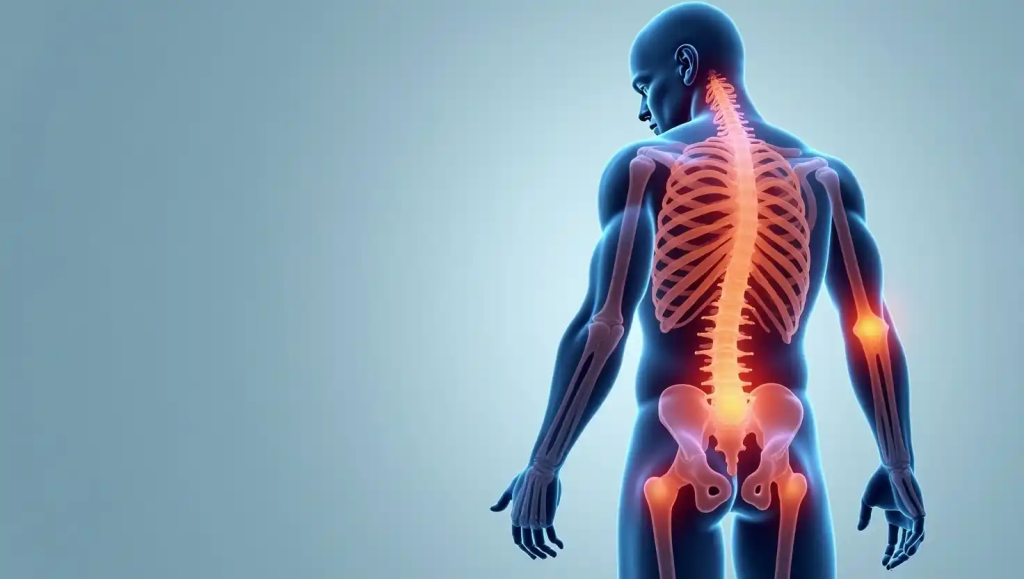Introduction
Many people dismiss early joint stiffness or occasional aches as a normal part of aging or overexertion. However, when it comes to arthritis, this “wait-and-see” approach can be one of the biggest mistakes. For many forms of arthritis, especially inflammatory types like Rheumatoid Arthritis (RA), early diagnosis and aggressive treatment are critical to preserving your long-term joint health, function, and quality of life.
The “Window of Opportunity” in Inflammatory Arthritis
Doctors often refer to a “window of opportunity” in treating conditions like RA—typically the first few months to a year after symptoms begin. Why is this period so crucial?
- Preventing Permanent Damage: Inflammatory arthritis doesn’t just cause pain; it actively damages the joint. The inflamed synovial tissue can invade and erode cartilage and bone, leading to irreversible joint deformities and destruction. Early treatment aims to “put out the fire” of inflammation before it causes significant structural harm.
- Improving Long-Term Outcomes: Studies consistently show that patients who start appropriate treatment early experience less joint damage over time, have better physical function, and are more likely to achieve disease remission.
Don’t Ignore the Early Warning Signs
Understanding the subtle differences between normal aches and arthritic symptoms can empower you to seek help sooner. Be alert to:
- Persistent Stiffness: Morning stiffness that lasts for more than 30 minutes is a red flag for inflammatory arthritis, unlike the shorter stiffness of osteoarthritis.
- Swelling and Warmth: A joint that is visibly swollen, puffy, and warm to the touch indicates active inflammation.
- Symptoms in Multiple or Unusual Joints: Pain that moves from one joint to another or affects multiple small joints (like in both hands and feet) is characteristic of systemic inflammatory arthritis.
- “Locking” or Instability: A feeling that a joint is giving way or catching can indicate damage within the joint.
- Profound Fatigue: Extreme, unexplained tiredness that doesn’t improve with rest is a common systemic symptom of autoimmune arthritis.
The Domino Effect of Delaying Treatment
Ignoring symptoms can set off a chain of negative consequences:
Joint Pain & Stiffness → Reduced Activity & Fear of Movement → Weakening of Muscles Around the Joint → Increased Stress on the Joint → Worsening Pain and Further Functional Decline.
Breaking this cycle early is much easier than trying to reverse it years later.
Taking the First Step: What to Do If You Suspect Arthritis
If you recognize any of the warning signs, take proactive steps:
- See Your Doctor or a Rheumatologist: A rheumatologist is a specialist in arthritis and autoimmune diseases. Describe your symptoms in detail—when they started, which joints are affected, what makes them better or worse.
- Keep a “Symptom Journal”: For a week or two before your appointment, note down your symptoms, their severity, and how they impact your daily activities. This provides your doctor with invaluable data.
- Prepare for Diagnostics: Your doctor will likely perform a physical exam and may order tests such as:
- Blood Tests: To check for markers of inflammation (like ESR and CRP) and specific antibodies (like Rheumatoid Factor or Anti-CCP).
- Imaging: X-rays can show bone damage, while ultrasound or MRI can detect early inflammation and erosion before it appears on an X-ray.
Conclusion: Knowledge is Power
Arthritis is a formidable opponent, but it is not undefeatable. Your most powerful weapon is knowledge and timely action. By recognizing the early signs, understanding the urgency of treatment, and partnering with your doctor, you can shift from being a passive victim of the disease to an active manager of your health. Don’t downplay your pain—listening to your body and acting early can make all the difference in your journey to staying active and mobile for years to come.



